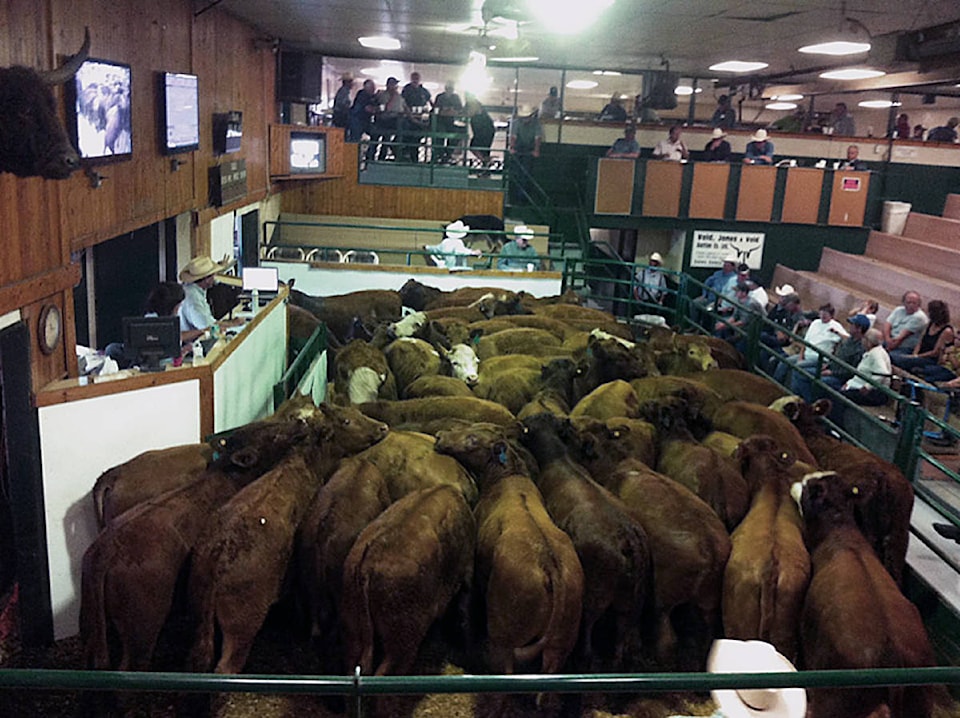While there remain highs and lows, the beef industry is less volatile now than it was several years ago.
That’s according to Kolton Kasur, a purebred Angus rancher located between Ponoka and Bashaw, who also happens to be a district delegate with the Alberta Beef Producers (ABP).
“Obviously, it is not as crazy as it was back around 2006 and 07. Things have been settled a lot lately,” Kasur explained.
“The big change right now is that lighter calves are off more than the heavier weights.”
An example he used was from a recent auction day in Ponoka, where a 900 pound animal went for about the same price as last year — between $1.45 and $1.58 per 100 weight. However, one that was 600 pounds sold for $1.60 to $1.70, down around 40 or 50 cents from 2017.
“With the drought last summer, which forced many to start feeding earlier, combined with the long winter, the challenge is, do you feed your cattle just to make that extra $150 per animal?” he asked.
“There’s a lot of feed moving right now and that’s the reality at the moment.”
Kasur is also in a unique position, dealing with all sorts of producers and helping fight for them through the ABP, but also knowing his purebred industry is a different type of market.
“As an organization, we are working hard to gain that new market access rather than relying on our old, traditional ones. There are opportunities to diversify and the more markets we can sell into the better off we are,” he noted.
“And obviously every operation is different, but the biggest I found being on ABP was how many sectors there are and it was eyeopening to find how large our feedlot industry is. As a purebred operation, my market is much different than those commercial feedlots.”
What that has meant for Kasur is figuring out how to blend his own concerns with those of the various beef sectors so he can represent everyone and not just one portion of the industry.
“The beef industry is just so much broader than just being a rancher, and sometimes you see that NIMBY (not in my backyard) attitude if you are not thinking about the industry as a whole,” he explained.
For his own operation, Kasur believes the future really lies in the American market as it seems like it appears to be expanding significantly.
“It seems the big money could be in the U.S. as it looks like a huge market to supply protein. As for prices, I’d like to see it come back to what was a few years ago, but I’m not going to rely on it,” he said.
“You can’t plan too far ahead, so I simply go from year to year and it seems to work for now.”
Kasur did note one major change that was expected to occur this year for beef producers, but there is still a hurdle to jump through.
The non-refundable checkoff on beef nationally has been raised to $2.50 per head, up from $1, but the provincial checkoff of $2 was due to become fully non-refundable. However, the ABP and the Alberta Cattle Feeders Association (ACFA) are still working on a deal to get that done.
So far, that hasn’t happened, and Kasur noted the proposal — which would see $1.30 go to the ABP, 40 cents to a new beef industry development fund and 25 cents to the ACFA — must still go to a plebiscite in order for the membership of the two organizations to approve the deal.
